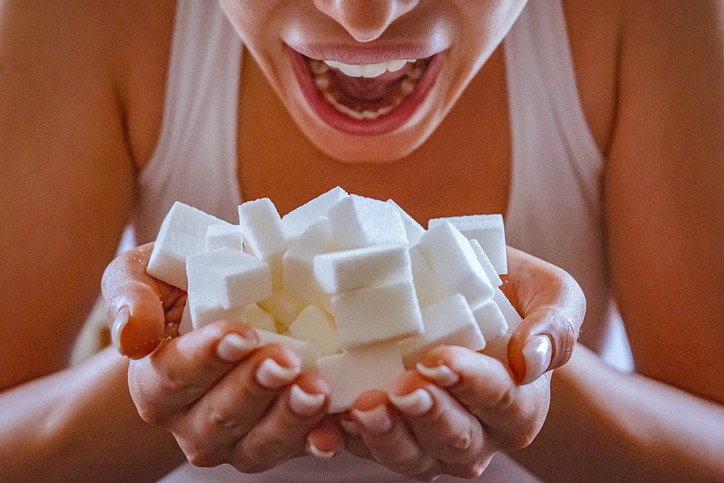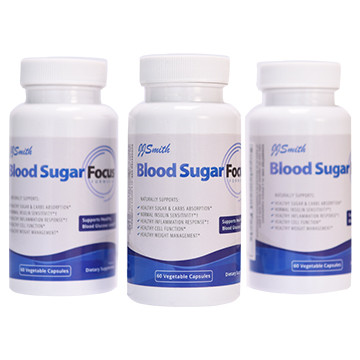Why is sugar so addicting?
Does it seem like no matter what you do, your cravings for sweets just won’t go away? If you struggle with sweets like I do and so many others, it is likely due to the fact that your brain has developed a sugar habit that is very difficult to break. Constantly craving sweets starts off as just a habit but can quickly escalate to an addiction. Although it may seem unusual to think about, sugar addiction is a real thing and it can have a negative impact on your health much like addictions to other substances like alcohol or drugs. Dopamine, the chemical that causes “feel good” emotions, is released into the body when sugar-containing foods are consumed. Every time you eat a sweet sugary snack or drink your favorite sugary beverage, sugar appeals to your brain and makes you feel happy, better known as dopamine. The psychological effect of sugar is that it causes the release of this dopamine and can stimulate the creation of serotonin, a hormone that can improve your mood. It’s a combination of a chemical reaction and nostalgia.
The fact that your brain constantly and subconsciously craves sugar is the secret that food makers work so hard to keep from you. The body starts to develop a tolerance when certain foods are consumed frequently or in excess. Once your brain develops a dependency on sugar, greater amounts of sugar needs to be consumed to have the same benefits. The use of drugs and alcohol follows a similar pattern, developing gradually into dependence and addiction. Similar to these chemicals, sugar makes the brain crave more leading to potential physical and psychological effects as well as long-term health risks.
Risks of sugar addiction?
Some risks of sugar addiction may include:
- Weight Gain/Obesity
- Diabetes
- Cardiovascular disease
A sugar addiction can turn into a vicious cycle. When you first consume sugar, it tastes delicious and gives you a “high” because your brain releases dopamine. Your insulin levels rise as a result of the sugar, which lowers your blood sugar levels. Your appetite and hunger rise as your blood sugar levels drop. Once again, your body will seek sugar to satisfy any hunger cravings or uneasy feelings, even if they are only temporary. Sugar is very addictive. Up to 75% of the processed foods you consume include a sweetener, and even consuming so-called “healthy” amounts of it can result in health issues. When you consume sugar, both the inside and outside of your body experience unhealthy degeneration. Every year it seems we learn more and more about how extremely dangerous and lethal even modest doses of artificial sugar can be.
Do you have an addiction to sugar? Here are 5 warning signs to watch out for. If any of these describe your behavior, you may have a sugar addiction:
- You experience sugar withdrawal
- You hide or deny your sugar habit
- You use sugar as a means of motivating yourself or as a reward
- You crave sweet and salty foods even when you’re not hungry
- You go out of your way to get sugar
Drop the sugar habit
Eight out of ten Americans are attempting to reduce their sugar intake, according to the American Heart Association. On average, adults take in about 77 grams of sugar daily. Over the course of a year, that comes up to nearly 60 pounds of sugar. That’s like carrying around 12 sacks of sugar. Imagine putting that into your body!
The Mayo Clinic advises giving your body a two-week break from sweets if you’re committed to stopping your sugar addiction. Try to limit yourself to foods with little to no added sugars or sweeteners; aim for less than 5 grams of added sugar per serving. But remember, this doesn’t have to be an entire detox.
Begin by avoiding sugary beverages. They are the sole problem, being responsible for roughly half of the added sugars consumed in America. Up to 10 teaspoons of sugar can be found in a 12-ounce can of soda. In just five or six gulps of your favorite soda, you can consume more sugar than you should each day.
Look for words that finish in “ose” as a general rule, such as sucrose, fructose, glucose, maltose, lactose, or dextrose. This indication makes it easier to identify additional sugars. Also, don’t be fooled by ingredients that seem healthier for you.
Making healthier choices
Start by including more whole foods in your diet, such as whole grains, fruits, vegetables, and lean meats. Natural sugars are still present in many fruits and vegetables, but the starch and fiber in these foods slow the digestive process and make you feel fuller. Read WebMD’s blog post on healthy carbs to find out more.
If you need an after-dinner snack that can fulfill your sugar cravings without making you feel like you’ve cheated, choose fruits like blueberries, raspberries, or blackberries as berries are typically a low-sugar option.
While giving up those sugar-filled beverages is difficult, try replacing them with water or flavored sparkling water. Without the additional sugar or calories from soda, the carbonation will imitate the fizz from your favorite drink.
Be cautious of hidden sugars that are frequently added to low-fat goods while choosing foods at the grocery store. Fat tends to give things flavor, therefore cutting it out of products might make them tasteless. To make their products more palatable, food producers add sugar back into their products. Any health benefits you may believe a product with less fat offers you may be offset by its high sugar or additive content. It’s vital to keep in mind that breaking poor sugar habits doesn’t require an abstinence from sugary foods or drinks. Take charge instead by adding a little sugar. For instance, as a reward for yourself, add a little honey to your yogurt; which is the better alternative for pre-packaged flavored yogurts with additional sugar.
Tips to break from your sugar addiction
- Add your own sweetener
- For example, start with an unsweet iced tea, then add your own sweetener:
- Splenda
- Truvia
- Stevia in the raw
- For example, start with an unsweet iced tea, then add your own sweetener:
- Watch for artificial sugars
- Look for words that finish in “ose” as a general rule, such as sucrose, fructose, glucose, maltose, lactose, or dextrose.
- Avoid sweetened drinks
- Soda, sweetened teas, sugary sports drinks
Sugar is full of empty calories and has little to no nutritional value. These calories have the potential to make you gain weight, which raises your risk of heart disease and stroke.
In actuality, sugar isn’t much different from a delicious fast food meal or a comfort food item. Because of their high glycemic index, these carbs convert quickly to glucose. You may feel wonderful throughout this quicker digestive process, but hunger will quickly set in since sugary foods lack nutrition and leave you feeling unsatisfied.
Get in touch with your primary care physician to find out more about how to implement changes before you make any dietary adjustments or think about eliminating sugar from your daily routine. If you have additional questions, post them on the JJ Smith Facebook Community page.


